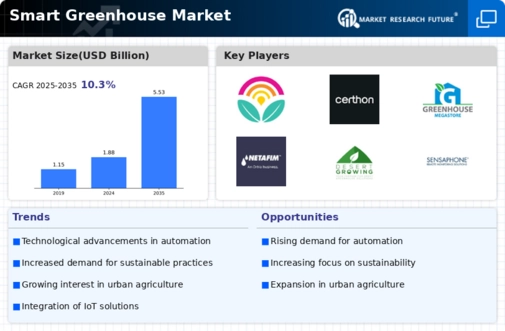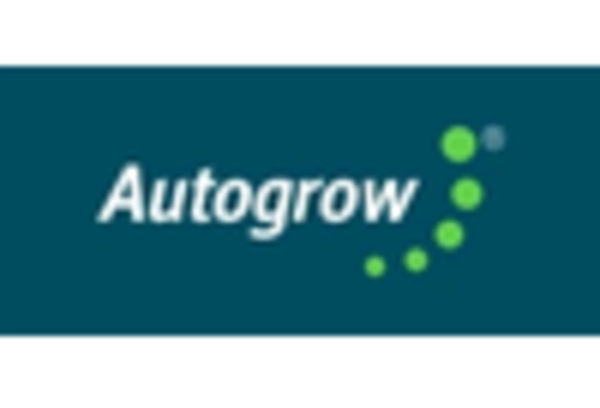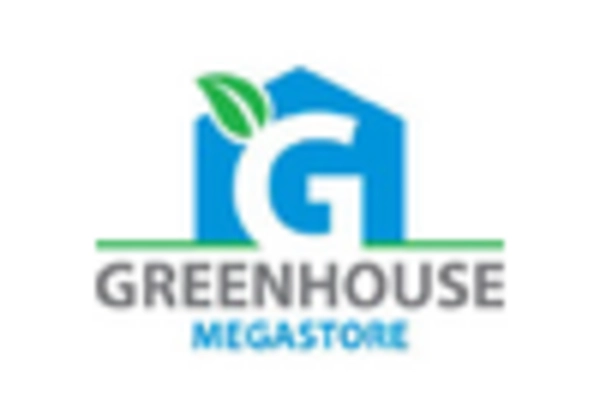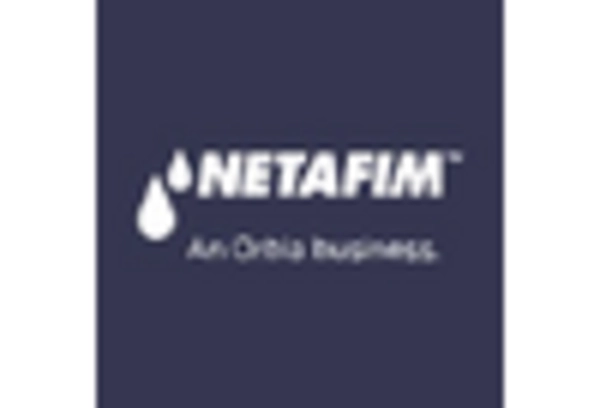Market Share
Smart Greenhouse Market Share Analysis
Businesses are investing in Internet of Things (IoT) devices and robotic technologies, which are then used to keep an eye on and manage greenhouse settings. With smart sensors, motors, and automatic systems, you can precisely control the temperature, humidity, and watering, which makes the best conditions for plant growth. To cut down on energy use, use tools that are better at saving energy, like LED lighting and improved temperature control systems. Energy economy cuts down on costs and fits with sustainability goals, which brings in people who care about the environment. letting you watch and control things from afar using mobile apps or the web. Remote access lets farmers check on their greenhouses and handle their systems from anywhere, giving them more control and freedom in how they run their greenhouses. Smart, flexible, and scalable greenhouse systems are being designed to fit plants of different kinds and types. Modular solutions let farmers change how their setups work, and scalability makes sure that they can adapt to new needs and changes in the market. A smart irrigation system with sensors can help you use water more efficiently and avoid overwatering. Farmers who care about the environment like water saving practices because they help maintain healthy farming methods.
Working with tools for precision agriculture to add farming methods used in precision agriculture to smart greenhouse systems. When combined with precision agriculture, it's possible to precisely distribute resources, which cuts down on waste and boosts farming output. teaching farmers how to use and gain from smart greenhouse technologies through educational programs and training. By giving farmers the information and skills they need to use smart greenhouse systems successfully, training programs help the market grow. using high-tech monitors and imaging tools to keep an eye on crop growth in real time. Finding diseases or other problems early on lets farms fix them quickly, which reduces food losses and increases yields. Detailed Analysis The growing world population and the resulting rise in food demand have an effect on the growth rate of the smart greenhouse global market. Innovative solutions that boost farming output are what shape market trends. This is because of the growing demand for fresh, sustainable food. Continuous improvements in technology, such as the addition of monitors, robotics, and data analytics, have a big impact on how markets work. It is possible for smart greenhouses to watch and control the environment, make the best use of resources, and increase food output by using cutting edge technologies. Due to the effects of climate change on traditional farming methods, there is more interest in controlled environment agriculture. Smart greenhouses offer answers to problems caused by climate change. Needing to protect crops and being able to make perfect growing conditions, even when the weather changes outside, affects how markets work. By making the best use of water, cutting down on pesticides and fertilizer use, and reducing waste, smart greenhouses help to make agriculture more sustainable and efficient. The push for growing methods that are better for the environment has an effect on market trends. Smart greenhouses are in line with the goals of sustainable agriculture. Market factors are affected by government programs, grants, and rewards that aim to encourage sustainable farming and the use of new technologies. Businesses and farms are more likely to invest in smart greenhouse technologies when they know they can get financial help for it. This helps the market grow. The smart greenhouse market is very competitive, with companies trying to come up with new ideas and get ahead of the competition. It is usual for technology companies, agriculture experts, and greenhouse makers to work together, which has led to the creation of smart greenhouse solutions that are integrated and complete. The smart greenhouse market is being pushed along by the rise in precision gardening, which is made possible by making decisions based on data. Real-time data collection and monitoring of food health, environmental factors, and resource use affects the way markets work, which helps farmers make better decisions and use their resources more efficiently.

















Leave a Comment